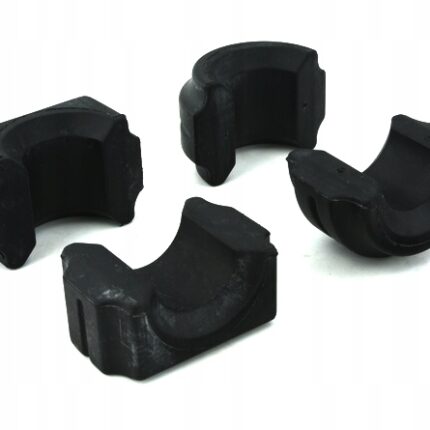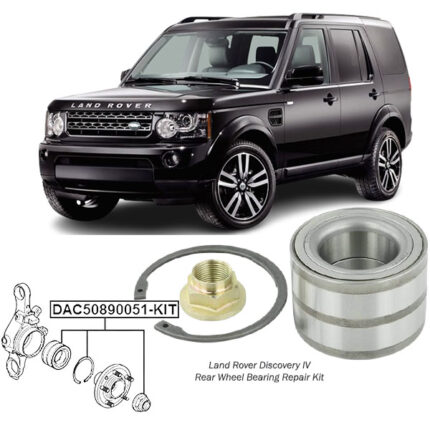-10%
Get Mitsubishi Outlander GF8W 2021 Front Engine Mount Assy MM-GF2FR in Kenya
Engine mounts, also known as motor mounts or engine support mounts, are vital components of a vehicle’s powertrain system. Their primary function is to support the engine and transmission assembly, attaching them to the vehicle’s chassis or subframe while minimizing the transfer of engine vibrations and noise to the passenger compartment.
Benefits:
1. Vibration Isolation:
- Reduced Vibrations: Engine mounts absorb and dampen engine vibrations, preventing them from transferring to the vehicle’s chassis and cabin. This leads to a smoother and quieter ride for passengers and improves overall comfort.
2. Engine Stability:
- Secure Engine Position: Engine mounts secure the engine in place within the vehicle’s engine bay, preventing excessive movement or shifting during acceleration, braking, and cornering. This stability ensures proper engine operation and performance.
3. Noise Reduction:
- Minimized Noise Transmission: By isolating the engine from the vehicle’s chassis, engine mounts help reduce the transmission of engine noise and vibrations into the cabin, resulting in a quieter driving experience.
4. Protection Against Impact:
- Shock Absorption: Engine mounts absorb shocks and impacts experienced by the vehicle, such as when driving over rough roads or encountering potholes. This helps protect the engine and other components from damage due to sudden jolts.
5. Longevity of Engine Components:
- Extended Component Lifespan: By reducing the transmission of vibrations and impacts, engine mounts help prolong the lifespan of various engine components, such as the exhaust system, drivetrain, and electrical connections.
6. Improved Driving Dynamics:
- Enhanced Handling: Properly functioning engine mounts contribute to better handling and stability of the vehicle by maintaining the correct engine position and weight distribution. This enhances overall driving dynamics and control.
7. Enhanced Safety:
- Optimized Vehicle Dynamics: Engine mounts play a role in maintaining the vehicle’s balance and stability, which is crucial for safe driving, especially during emergency maneuvers and adverse road conditions.
8. Reduction of Wear and Tear:
- Mitigated Wear on Components: Engine mounts help minimize wear and tear on various vehicle components by absorbing vibrations and impacts, thereby reducing the risk of premature failure or damage.
9. Improved Fuel Efficiency:
- Optimized Engine Performance: By providing stable engine support and reducing unnecessary vibrations, engine mounts contribute to optimized engine performance, which can translate to improved fuel efficiency over time.
Signs a car needs new stabilizer links;
1. Excessive Engine Movement:
- Visible Engine Movement: If you notice excessive movement of the engine, particularly during acceleration, deceleration, or when shifting gears, it may indicate worn or broken engine mounts.
- Engine Rocking: When the engine rocks back and forth or moves excessively during starting or stopping, it’s a clear sign of worn mounts.
2. Vibrations and Noise:
- Increased Vibrations: Excessive vibrations felt throughout the vehicle, especially at idle or under acceleration, can be a sign of worn engine mounts. These vibrations may feel more pronounced in the steering wheel, floorboards, or seats.
- Unusual Noise: Clunking, banging, or thumping noises coming from the engine bay, particularly during acceleration, deceleration, or when shifting gears, can indicate worn or broken engine mounts. These noises result from the engine shifting position due to weakened mounts.
3. Misaligned Components:
- Misaligned Components: Worn engine mounts can cause misalignment of various engine components, such as the exhaust system or driveshafts. If you notice unusual rubbing or contact between components, it may be due to compromised engine mounts.
4. Excessive Engine Tilting:
- Engine Tilting: When the engine tilts excessively in one direction, especially during hard acceleration or braking, it suggests that the mounts are no longer providing sufficient support and stability.
5. Visible Wear or Damage:
- Cracked or Broken Mounts: Inspect the engine mounts visually for signs of cracking, tearing, or physical damage. If the mounts appear deteriorated or damaged, they likely need to be replaced.
- Fluid Leaks: Some engine mounts are filled with hydraulic fluid or liquid-filled. If you notice leaks around the mount or signs of fluid seepage, it indicates a failure of the mount.
6. Increased Engine Noise:
- Increased Engine Noise: Worn or failed engine mounts can lead to increased engine noise inside the cabin, particularly during acceleration or when the engine is under load. This occurs as the mounts are no longer effectively dampening engine vibrations and noise.
Follow us on Facebook for more parts.




